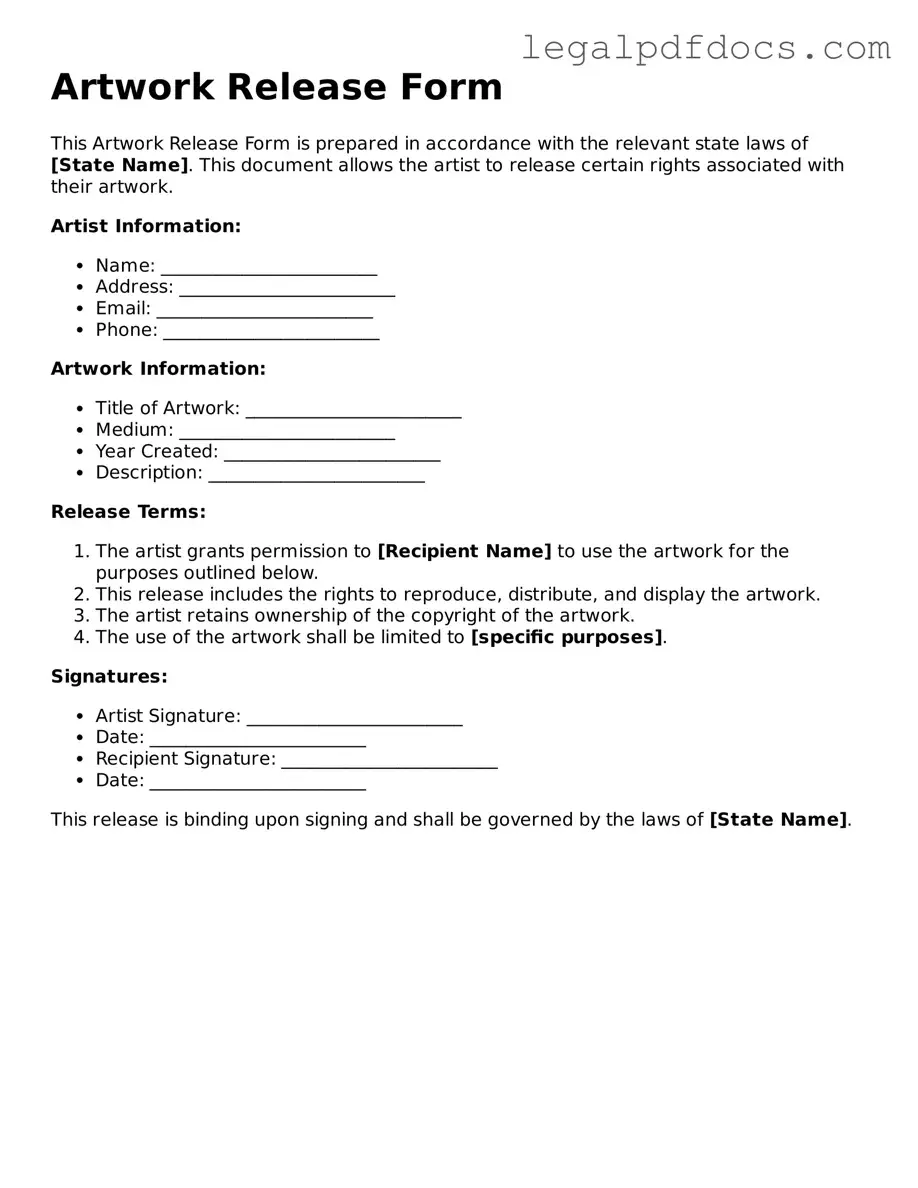Artwork Release Template
The Artwork Release form is a legal document that grants permission for the use of artwork created by an individual. This form ensures that the artist retains their rights while allowing others to utilize their work for various purposes. Understanding the importance of this form can help protect both artists and those who wish to use their creations.
To ensure your rights are safeguarded, fill out the form by clicking the button below.
Open Artwork Release Editor Here
